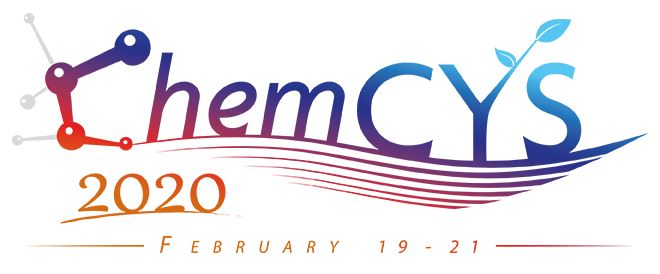We have just updated our Recent Reviews collection! This rolling collection showcases all of the review articles published in RSC Advances in the last 6 months and now includes January 2020. We update it every month so don’t forget to keep coming back.
We hope you enjoy reading and as always, all of our articles are open access so you can easily share your favourites online and with your colleagues.
Check out the full collection!
Browse our January reviews below:
Antimicrobial peptides from Bombyx mori: a splendid immune defense response in silkworms
Jannatun Nesa, Abdul Sadat, Danieli F. Buccini, Ahmet Kati, Amit K. Mandal and Octavio L. Franco
RSC Adv., 2020, 10, 512-523
DOI: 10.1039/C9RA06864C, Review Article
A review of fibrous materials for soft body armour applications
Unsanhame Mawkhlieng, Abhijit Majumdar and Animesh Laha
RSC Adv., 2020, 10, 1066-1086
DOI: 10.1039/C9RA06447H, Review Article
Recent developments in detoxication techniques for aristolochic acid-containing traditional Chinese medicines
Yang Fan, Zongming Li and Jun Xi
RSC Adv., 2020, 10, 1410-1425
DOI: 10.1039/C9RA08327H, Review Article
Colorectal cancer stem cells: a review of targeted drug delivery by gold nanoparticles
Manali Haniti Mohd-Zahid, Rohimah Mohamud, Che Azurahanim Che Abdullah, JitKang Lim, Halima Alem, Wan Nurhidayah Wan Hanaffi and Iskandar Z. A.
RSC Adv., 2020, 10, 973-985
DOI: 10.1039/C9RA08192E, Review Article
SGLT inhibitors as antidiabetic agents: a comprehensive review
Rahul P. Kshirsagar, Abhishek A. Kulkarni, Rashmi S. Chouthe, Shahebaaz K. Pathan, Hemant D. Une, G. Bhanuprakash Reddy, Prakash V. Diwan, Siddique Akber Ansari and Jaiprakash N. Sangshetti
RSC Adv., 2020, 10, 1733-1756
DOI: 10.1039/C9RA08706K, Review Article
The effect of magnetic field pretreatment on the corrosion behavior of carbon steel in static seawater
Shuanzhu Zhao, Yaxin Wang, Yunxiu Zhao, Xiaotong Sun, Huijuan Zhang, Hong-Guang Piao, Yujiao Zhang and Yanliang Huang
RSC Adv., 2020, 10, 2060-2066
DOI: 10.1039/C9RA09079G, Review Article
Asymmetric catalysis in direct nitromethane-free Henry reactions
Lin Dong and Fen-Er Chen
RSC Adv., 2020, 10, 2313-2326
DOI: 10.1039/C9RA10263A, Review Article
Therapeutic potential of dithiocarbamate supported gold compounds
Christian K. Adokoh
RSC Adv., 2020, 10, 2975-2988
DOI: 10.1039/C9RA09682E, Review Article
Mass spectrometry-based metabolomics in health and medical science: a systematic review
Xi-wu Zhang, Qiu-han Li, Zuo-di Xu and Jin-jin Dou
RSC Adv., 2020, 10, 3092-3104
DOI: 10.1039/C9RA08985C, Review Article
Recent developments on oximes to improve the blood brain barrier penetration for the treatment of organophosphorus poisoning: a review
Mohd Nor Faiz Norrrahim, Mas Amira Idayu Abdul Razak, Noor Aisyah Ahmad Shah, Herdawati Kasim, Wan Yusmawati Wan Yusoff, Norhana Abdul Halim, Siti Aminah Mohd Nor, Siti Hasnawati Jamal, Keat Khim Ong, Wan Md Zin Wan Yunus, Victor Feizal Knight and Noor Azilah Mohd Kasim
RSC Adv., 2020, 10, 4465-4489
DOI: 10.1039/C9RA08599H, Review Article
Recent developments in the synthesis of regioregular thiophene-based conjugated polymers for electronic and optoelectronic applications using nickel and palladium-based catalytic systems
Bibi Amna, Humaira Masood Siddiqi, Abbas Hassan and Turan Ozturk
RSC Adv., 2020, 10, 4322-4396
DOI: 10.1039/C9RA09712K, Review Article
Challenges and opportunities in the recovery of gold from electronic waste
Mudila Dhanunjaya Rao, Kamalesh K. Singh, Carole A. Morrison and Jason B. Love
RSC Adv., 2020, 10, 4300-4309
DOI: 10.1039/C9RA07607G, Review Article
Recent synthetic efforts in the preparation of 2-(3,4)-alkenyl (aryl) quinoline molecules towards anti-kinetoplastid agents
Dayana Orozco, Vladimir V. Kouznetsov, Armando Bermúdez, Leonor Y. Vargas Méndez, Arturo René Mendoza Salgado and Carlos Mario Meléndez Gómez
RSC Adv., 2020, 10, 4876-4898
DOI: 10.1039/C9RA09905K, Review Article

Submit to RSC Advances today! Check out our author guidelines for information on our article types or find out more about the advantages of publishing in a Royal Society of Chemistry journal.
Keep up to date with our latest HOT articles, Reviews, Collections & more by following us on Twitter. You can also keep informed by signing up to our E-Alerts.













 This conference will provide the opportunity for established and emerging researchers from academia and industry around the world to come together and share their research on biocatalytic amine synthesis. It will showcase recent advances in biocatalysis research, covering various cutting edge topics in the field, from the identification and engineering of amine forming enzymes and their application to the development of new enzymatic cascades.
This conference will provide the opportunity for established and emerging researchers from academia and industry around the world to come together and share their research on biocatalytic amine synthesis. It will showcase recent advances in biocatalysis research, covering various cutting edge topics in the field, from the identification and engineering of amine forming enzymes and their application to the development of new enzymatic cascades.



